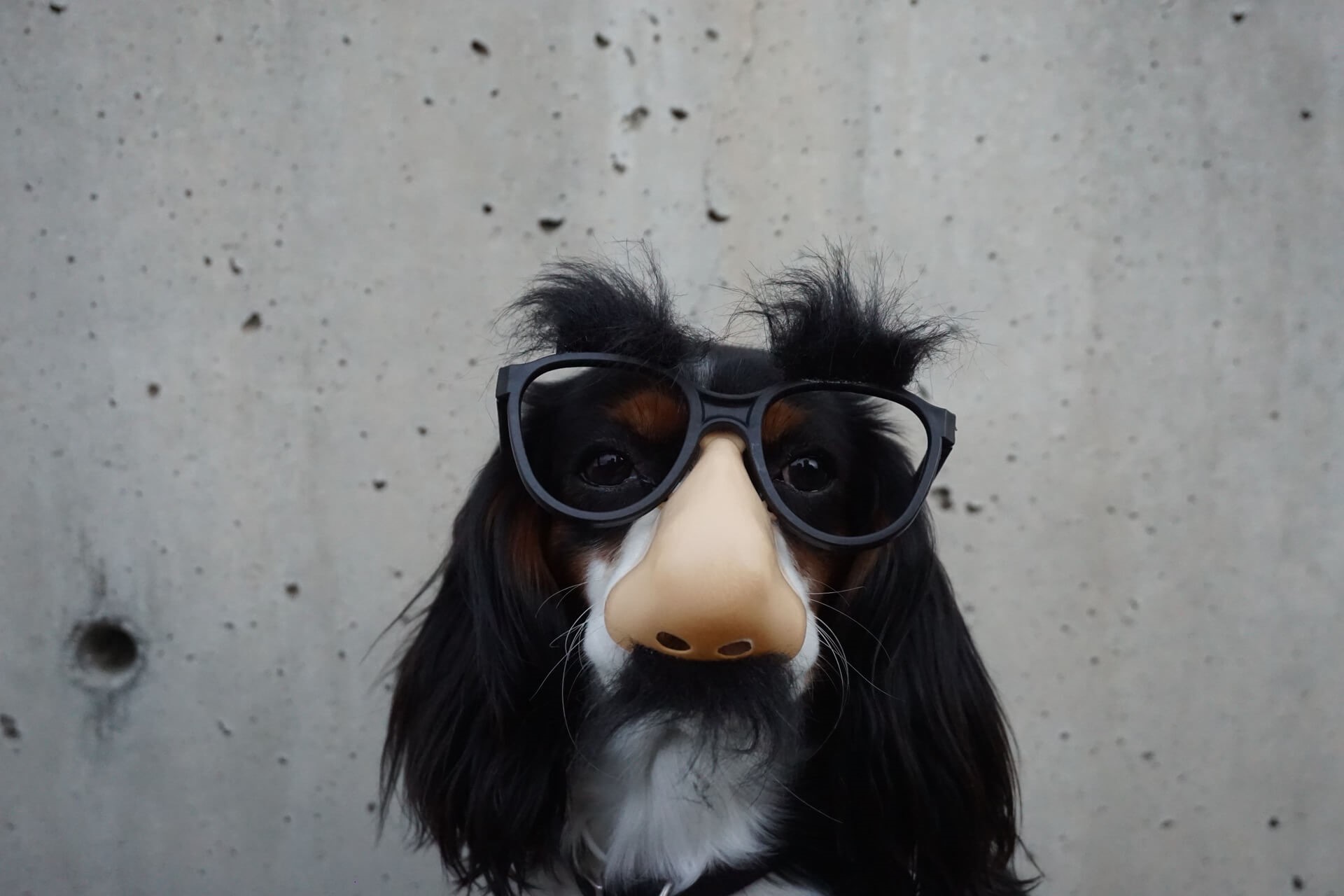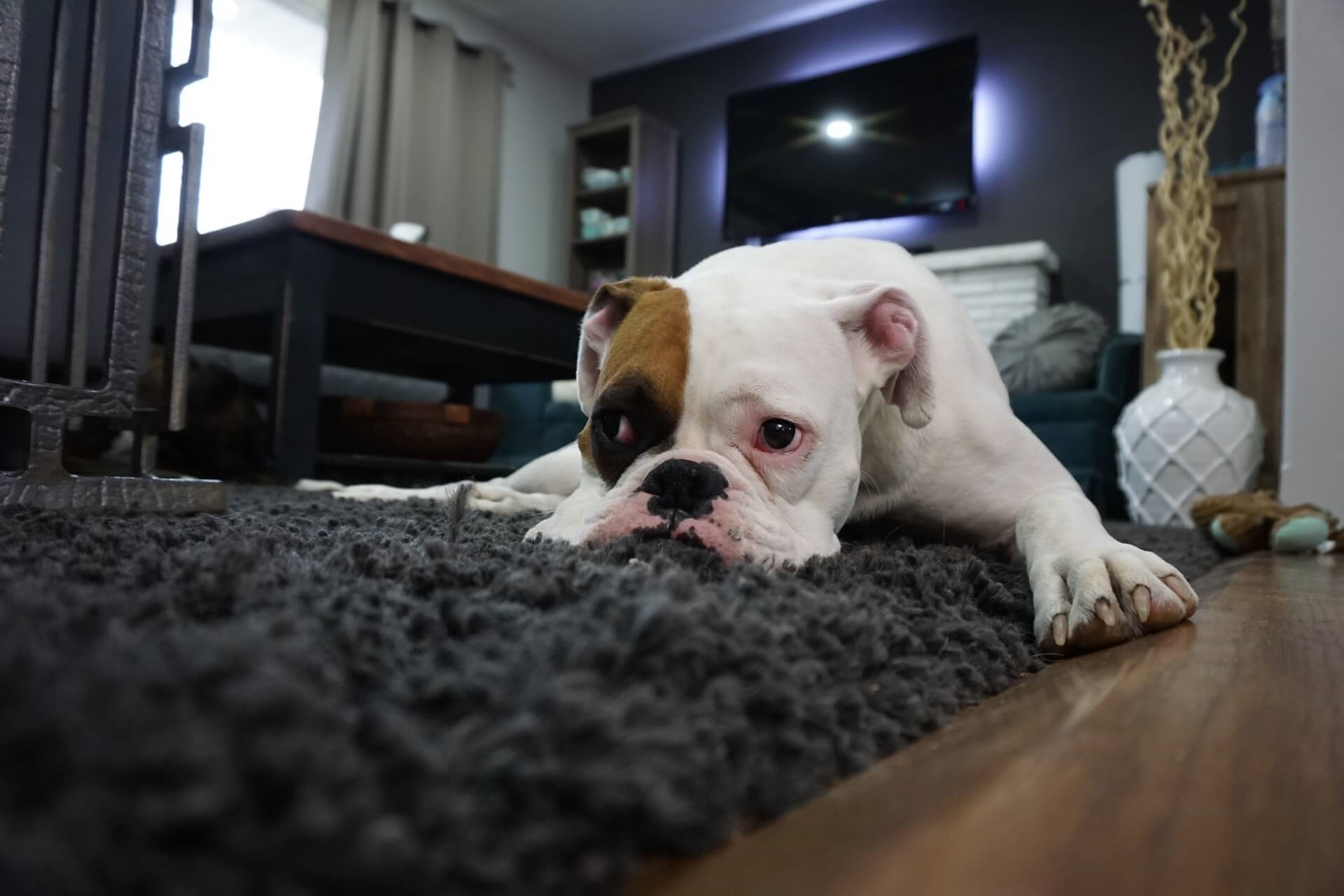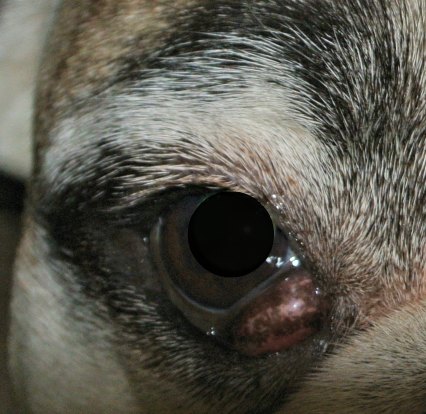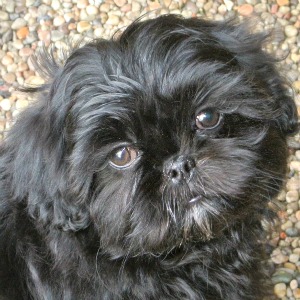Common Dog Eyelid
Conditions
That Affect Our Small Dogs
Guest Post by Amanda Wilks |Last Updated August 13, 2019
 Fancy glasses are not likely to help your dog see better, but there is hope for common eyelid problems.
Fancy glasses are not likely to help your dog see better, but there is hope for common eyelid problems.Small Dog Eyelid Conditions: Should we worry?
Our dogs are an important part of the family. The moment they look you in the eye, you know you have found a new best friend.
Moreover, you know you have the responsibility to protect them as well as you can. Consequently, we need to be aware of the conditions that can harm them and act the moment we see them.
Since the eyes and eyelids are the most sensitive part of all beings, it would be good to carry out some research in this direction.
Let’s embrace the ugly truth of the common eyelid conditions and get ready to step in with solutions.
Dog Eyelid Conditions
In this article, I will discuss 3 of the major dog eyelid conditions. Feel free to scroll down and read them all or jump directly to the one of most interest to you
Many of these conditions have a genetic component, but there is also the possibility of environmental trauma that can bring them on.
Ectropion
When dogs have a drooping eyelid, it means that they suffer a common condition called Ectropion. The eyelids have their margins rolling outward. This is usually accompanied by a sort of a crack in the eyelid which gives the dogs the image of bloody eyes.
Because of this abnormality, the palpebral conjunctiva which coats the inside of eyelids gets exposed to external microbes.
This new vulnerability point may lead to other serious diseases that become a threat to your dog’s sight.
Usually, Ectropion affects big breeds like St. Bernards, Bloodhounds, and Retrievers.
Because of their loose facial skin, they are genetically predisposed to this kind of condition.
However, small dogs are far from being immune to it. Any kind of scars or other injuries of the eyelid can trigger Ectropion.
Treatment for Ectropion
The veterinarian is the first person you need to contact in case your dog has an eyelid inflammation.
If you find Ectropion right from the beginning, the treatment will be less intrusive for mild cases.
You might cure the disease with a topical lubricant or cream that contains an antibiotic.
Entropion
Entropion is a common condition that forces the eyelid to roll inwards. It is a genetic disorder that can usually be diagnosed around the first year of a dog’s life. The rolling in of the eyelids cause the hair on the surface of the eyelid to rub against the eye which can lead to cornea ulcers which can be very painful.
It affects all kinds of breeds, including short-nosed ones like Shih Tzu, Pugs, Pekinese, English Toy Spaniel, and Brussels Griffins.
The cause of this genetic condition is the facial physiognomy. In some breeds, the eye suffers more tension on the ligaments than normal. Since it does have a genetic component, dogs that have this problem should not be bred. Veterinary ophthalmologists can test the eyes of breeding dogs and results can be sent to the Orthopedic Foundation for Animals (OFA).
However, entropion can also be caused by external factors. So, once again, no dog is safe from it.
Canines that have a history of eye infections have a higher chance of being afflicted with entropion.
This common eyelid disease can create the right medium where many other conditions can thrive. Entropion leads to increased sensitivity in your dog’s eyes. At any moment, something as soft as an eyelash can scratch the surface. This can lead to inflammations, infections, and even to corneal ulceration or perforation.
Treatment for Entropion
Dogs can be in a continuous state of pain if the condition is not treated in due time. The eyelashes are constantly irritating them, and the tissue doesn’t have a chance to heal if it remains untreated.
The treatment can be intrusive, but the results will lessen the pain. They may require stitches in the eyelid to re-position it normally, injections in the lid or anesthetics to numb the nerves. However, some cases have no other solution than surgery.
Lagophthalmos

Simply put, Lagophthalmos is a condition that hinders dogs from closing their eyelids fully.
There can be a lot of consequences of this issue. The eye
remains dry, which makes it a perfect environment for microbes.
This can trigger scarring, unusual coloring,
and sores that won't heal easily. The
source of Lagophthalmos can be triggered
by yet another type of physiological constitutions.
Breeds that can catch this
disease usually have a short and flattened head, like Pugs, the so called Brachycephalic breeds. But any dog that gets a
foreign mass in their eye socket can be on the list.
Treatment for Lagophthalmos
If the causes can’t be eliminated, then the treatment may come in the form of surgery. Your vet could try to address this eyelid condition with lubricating ointments first.
Abnormalities of the Eyelashes
Eyelashes can cause some problems if they are misdirected on the edge of the eyelid or if there are two many of them in numbers. Watering eyes, blood vessels in the cornea, scaring of the cornea and slow healing sores are just some of the issues that eyelashes can cause.
When the eyelashes are very fine may not cause problems, but if eyelashes stick out through the eyelid touching the eye, the resulting pain can be severe.
When eyelashes cause damage to the conjunctiva or cornea, it may be time to surgically remove them along with the follicles. There is likely a genetic component to these problems.
So, these are the three main dog eyelid conditions that your pup may suffer from. Now that you are aware of them, you can easily identify their presence and contact your vet as soon as possible. The sooner your furry friend gets help, the better.
Author Bio: Dog Eyelid Conditions
Amanda Wilks is a part-time writer, with a great interest in everything related to animals health and welfare. You can follow her on Twitter at @AmandaWilks01.
Do You Find Dog Health Concerns Fascinating?
Maybe you should consider a career in animal health.
If you consider that you have what it takes to attend and heal animals, you can find out how you can become a veterinarian. There’s no better feeling in the world than saving innocent animals.
Recommended for You
If you found this article about dog eyelid conditions, helpful, may we suggest you check out these other posts about other eye problems.
About Janice (author and voice behind this site)
Having lived with dogs and cats most of her life, Janice served as a veterinary technician for ten years in Maryland and twelve years as a Shih Tzu dog breeder in Ohio.
Her education includes undergraduate degrees in Psychology with a minor in biology, Early Childhood Education, and Nursing, and a master's in Mental Health Counseling.
She is a lifelong learner, a dog lover, and passionate about the welfare of animals. Her favorite breed for over 50 years has been the Shih Tzu, but she has also lived with Poodles, Maltese, Yorkshire Terriers, Beagles, English Bulldogs, Carin Terriers, and a Cocker Spaniel.
When not writing, reading, and researching dog-related topics, she likes to spend time with her eight Shih Tzu dogs, husband, and family, as well as knitting and crocheting. She is also the voice behind Miracle Shih Tzu and Smart-Knit-Crocheting
Does This Article Deserve Your Thumbs Up?
We always appreciate your support and encouragement. Your thumbs up means so much to us. Please like this article.
If you find this page or any page on Small Dog Place Helpful, or useful in anyway, I'd love it if you would click the small heart found on the bottom right of each page.
You can also share or bookmark this page -- just click on the:

Free Monthly Newsletter
Sign Up for Our Free Newsletter and get our Free Gift to You.
my E-book, The Top 10 Mistakes People Make When Choosing a Dog (and how to avoid them)




